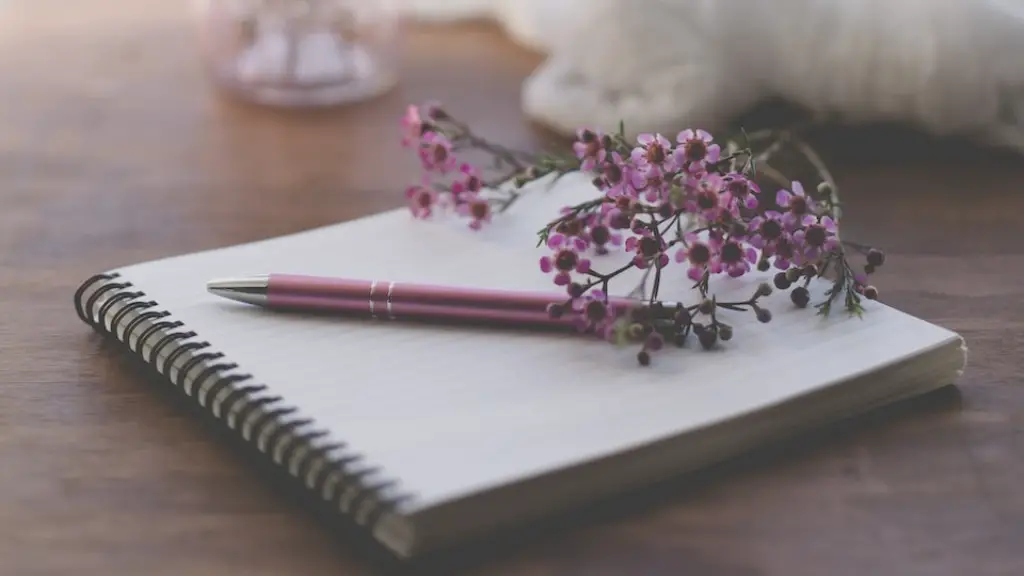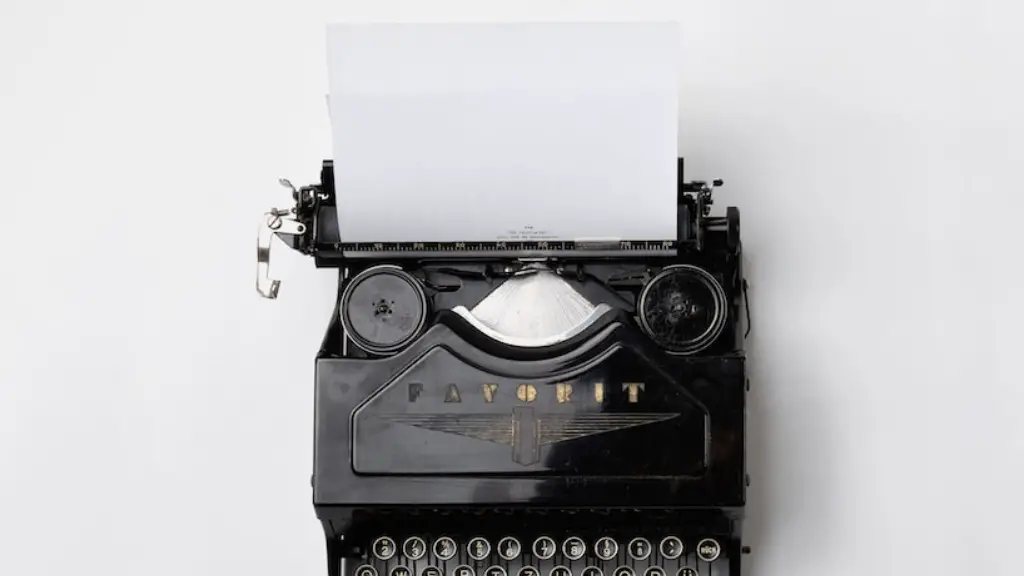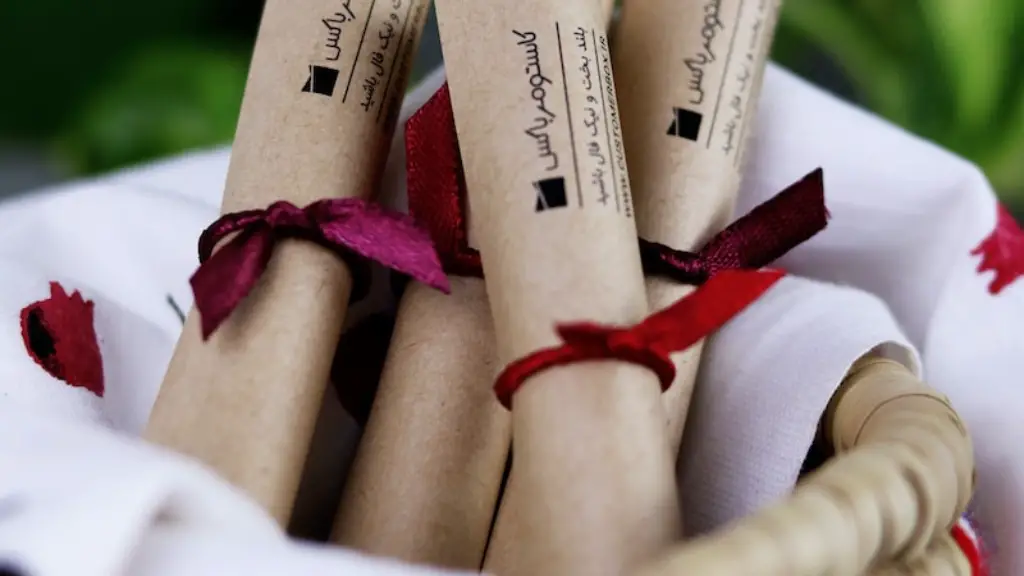What is a foot in poetry? A foot is a fundamental building block of poetry, and it is the basic unit of meter used to construct a poem. It helps to define its prosody, or its rhythm and sound pattern. The word “foot” originates from the Latin term “pedem,” which means “foot.” In poetry, a foot consists of a combination of two or three syllables of varying emphasis, or stresses, and their sound patterns.
In traditional verse forms, such as iambic pentameter, there are typically five feet in each line and the foot is repeated throughout the poem. A foot is usually repeated in a poem in the same or similar pattern, but there are many types of meter and creative uses of meter that can add flexibility and variety to a compelling poem. The most common types of feet include the iamb, trochee, dactyl, anapest and spondee.
The iamb is the most common foot in English poetry. In an iambic foot, the emphasis falls on the second syllable of the two. An example of an iambic foot is the word “assure,” which is made up of two syllables with the stress on the second syllable. Iambic feet are typically used to create a light and natural rhythm, especially in narrative and lyric poetry.
The trochee is the opposite of an iamb, and the emphasis falls on the first syllable of the two. As an example, the word “happy” is a trochee foot. Trochees are used to create a stronger, more dynamic rhythm in a poem.
The dactyl consists of three syllables, with the emphasis or stress falling on the first. The word “poet-ry” is an example of a dactyl foot. Dactylic feet are typically used for comic, dramatic and epic verse.
An anapest is composed of three syllables, with the emphasis on the third. The word “under-stand” is an example of an anapest foot. Anapests can create a more playful and bouncy style of rhythm.
Lastly, the spondee is made up of two syllables with equal emphasis. An example of a spondee foot is the word “black-bird.” Spondee feet are typically used for solemn or ceremonious verse.
A poem’s meter varies from one stanza to the next. A poem’s meter can also vary in a single line, as it is common to use a series of different feet to create more dynamic and varied sounds.
The use of poetic meter has been around since ancient times, but it was perfected by the Roman poet Horace in the first century. English poets have since adapted it to suit the English language and its many dialects, making it an accessible and functional tool for modern poets.
Rhythm in Poetry
The use of poetic meter helps create a rhythm in poetry, and rhythm can be described as a pattern of stressed and unstressed syllables. Its purpose is to create an auditory effect, adding musicality to the poem. The most common rhythm patterns in poetry are called beats, which are made up of one or more stressed syllables and multiple unstressed syllables.
Strong beats are usually separated by lighter, less distinct beats. This gives the poem its rhythm, which contrasts with a poem’s meter, also known as its formal arrangement or pattern of stresses.
Poets use meter to create a desired pace or feel in their poems based on the length of the beats or feet. Typically, longer beats are used to express a slower, more contemplative mood. The longer the beat takes to sound, the slower the poem’s pace will be.
Shorter beats, meanwhile, represent a faster pace, allowing the poet to stress certain words to capture a more energetic tone in their work. In addition, by using a set meter, poets can tie their work together, allowing readers to focus and appreciate the poem’s rhymes, assonances and alliterations.
The Impact of Poetic Meter
Meter is an essential element of poetry, as it helps create a pleasing and harmonic effect. When used effectively, it can help a poet express their emotion, effectively conveying their ideas and creating a powerful impact on a reader.
The use of meter in poetry can also give the writer more control over the sound of their poem. It creates an emotional canvas that the writer can work with. For example, a poet might use iambs to express a calm and steady mood, creating a peaceful and quiet verse.
Similarly, a poet may use trochees to create a more dynamic and powerful mood, adding a sense of energy and movement to the poem. In this way, a poet can control the overall tone and mood of their poem by selecting the proper meter.
Variety in Poetry
When used effectively, a poet’s selection and variation of different meters can help create a more engaging poem. For example, in most traditional poetic genres such as the sonnet and villanelle, poets often use a strict rhyme scheme and meter in order to provide structure and cohesion.
However, in certain forms, such as free verse, poets have more freedom to utilize a variety of meters as well as stanzas, line length and punctuation. This gives poets more room to experiment with different meters and create a unique and more varied effect in their work.
In addition, some poets may intentionally play around with meter by varying their feet or creating a representation of a phrase or word. This can be used to add emphasis and make the poem more meaningful, or simply to make the poem more visually appealing.
Conclusion
In short, a foot in poetry is a small combination of syllables with varying levels of emphasis. It is the basic building block of meter that poets use to create rhythm in their work. The type of foot a poet chooses is important; different meters can create different feelings and impact a poem differently. This is why it important for poets to be aware of the different types of feet available, and to experiment with them in their work.



